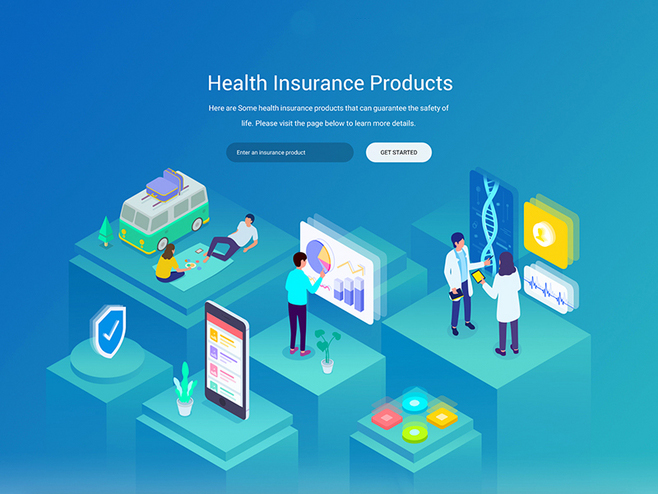
How Health Information Technology Giant Cerner Combines with Health Insurance
First of all, I can say it clearly and responsibly: it is necessary to buy!
In light of recent current events, it is easy to see that it is necessary to buy health insurance, and to buy it in advance, you can’t buy it after an accident. Critical illness insurance, in the event of a disease on the policy, the insurance company will pay out a lump sum of the sum insured, which can be used freely. It can be divided into savings (with death) and consumer (without death) according to whether death is included or not. The savings type is much more expensive than the consumer type, so there is no such thing as the best one. Only the most appropriate purchase plan. When buying, make sure to pay attention to the “outside the scope of coverage” situation. There is another type of critical illness insurance called “refundable critical illness insurance”. This is because it is difficult to return to the age of 80, and inflation brings currency devaluation. I don’t recommend buying it here.
The second is medical insurance, where you pay for your own treatment when you get sick and then get reimbursed by your insurance company with your bill.
The biggest difference between medical insurance and critical illness insurance is that the reimbursement can only be used for medical treatment after paying out-of-pocket. Treatment costs must be necessary and reasonable to be reimbursed. Medical insurance will not pay out more than the cost of medical treatment. Even if a medical insurance policy has a high amount of coverage, it will not actually be used. Medical insurance is subject to reimbursement coverage, reimbursement rates and deductibles, so pay attention when you buy it! Therefore, “critical illness insurance + medical insurance” is the best combination. The latter can neutralize the cost of treatment, and the former can get extra money. The latter can neutralize the cost of treatment, while the former can provide additional funds for maintenance, education, life, etc. after a serious illness. As you can see, the different types of insurance are not conflicting and complement each other.
Three As for accident insurance and life insurance, they serve more to minimize the consequences of uncontrollable risks. Accident insurance is very cost effective and there is no reason not to buy it; life insurance is more needless to say, people inherently die and carry the final responsibility for their families. The effective scope of these two products is relatively clear and there are not many disputes. It is worth noting that accident insurance does not pay out for accidents like heat stroke and sudden death that are essentially caused by personal physical causes. In the end, it is important to pay attention to the “exclusions” when purchasing.
Cerner Corporation, headquartered in Missouri and founded in 1979, is a leading provider of health information technology services, equipment and hardware to the U.S. healthcare industry. Cerner designs, installs and supports application health network architectures developed around a single architecture that allows clinics, hospitals, HMOs, physicians and integrated health organizations ( IHOs) to share clinical and administrative data across multiple disciplines and facilities. As a leader in the EHR space, Cerner has not only built a comprehensive set of health network architectures, but also offers a solution for self-funded employers. Beyond that, and what we believe makes Cerner stand out more is the value it brings to segments such as risk pricing and health management through healthcare data, which is reflected in the current megatrend of convergence between healthcare information technology companies and insurance.
Cerner has built a health network architecture, an integrated IT system that unifies all software products into one architecture, including a variety of solutions for healthcare providers, employers, patients, health plan providers and government agencies, focusing on population health management, clinical solutions, continuity of care, pharmacy management, laboratories, openness and interoperability, revenue cycle management, and other services and technologies. Cerner’s customers can purchase the entire Health Network Architecture system or choose from individual applications, adding applications as needed while enabling seamless information flow across applications.
Cerner’s solution
It is an electronic health case platform that integrates various types of care, both inpatient and outpatient, into a single platform that allows care providers to make informed, data-driven decisions by providing real-time access to patient health data without leaving the clinical workflow, with specific capabilities such as medication management documentation, data analytics, audit reports and labs, and medication alerts. This product is suitable for enterprise healthcare care organizations that offer multiple specialties, such as large hospitals or behavioral health providers. For healthcare organizations, Cerner’s solution connects multiple facilities and the entire continuum of care, linking hospitals, clinics, physician offices, long-term care facilities and other locations for information sharing and access. On the performance management side, Cerner’s revenue cycle solution is tightly integrated with clinical processes, allowing the financial, operational and clinical aspects of a healthcare organization to work together. On the patient side, one of Cerner’s portals is integrated with the EHR, allowing patients to access their records to participate in care. Patients can communicate with providers via secure messaging to book or change appointments, view clinical information, request refills, update information and send documents. Through this portal, physicians can share authenticated, evidence-based data with patients on more than 3,000 topics. Thanks to its strong product portfolio, Cerner has gained many customers since its inception. Among the company’s most iconic customers are Ascension, the largest not-for-profit Catholic health system in the United States, which partnered with Cerner in 2004 to migrate all of its care facilities to a single EHR solution.
As it continues to grow its EHR business, the company is also refining its business related to self-funded employer health plans. In a landmark move, in 2009, the company acquired IMC Health Care, an employer-sponsored provider of on-site health centers for well-known companies including Toyota in. The acquisition will reportedly expand Cerner’s employer health plans, pharmacies and wellness programs. As stated by Cerner executives, IMC Health Care has a long history of providing on-site employer health centers and occupational health expertise, and this acquisition will strengthen Cerner’s position as an integrated employer health services provider. In fact, Cerner itself has a 20-year history of adopting a self-insured model in order to better control health care costs, having had a wholly owned subsidiary as its third-party administrator since 2006. That same year, Cerner expanded its employer offerings and opened a primary care clinic at its headquarters in Kansas City, Missouri. The company’s offerings for more than 25,000 employees and their families include primary care services, pharmacy, chronic disease management and wellness programs, electronic health records and secure messaging capabilities with providers.
For other self-funded employers, Cerner has introduced solutions for benefits, care, member engagement, and data analytics that provide key information and insights specific to member information to drive member engagement and health status.
For benefits management, Cerner provides claims processing and helps manage corporate integration with health plans, thereby facilitating easier benefits management and a smooth member experience.
For care management, Cerner offers a range of services covering consulting, health navigation and a dedicated care team that provides health coaching and care coordination for members. cerner’s care management solutions support a person-centered approach that proactively monitors, coordinates and facilitates health services throughout the care process.
From Cerner’s business perspective and the trend toward integration of EHRs and the insurance industry, EHRs can bring a wealth of open healthcare data to the insurance industry, thereby empowering insurers, healthcare providers and insurance customers in all aspects of coverage decisions, health management and claims processing. the most valuable asset of an EHR is the integration of data across patients and providers that has interoperability feature that breaks down data barriers, thus allowing patients, providers, and even insurers to share real-time data. We believe that this will be the most important empowerment that EHR can bring to insurance organizations.
Specifically, with access to real-time medical data, insurance companies will be able to make quick underwriting decisions based on key data, thereby avoiding business churn while benefiting their insurance customers. At the same time, with this data, insurance organizations can better execute health management.
0 Reviews








